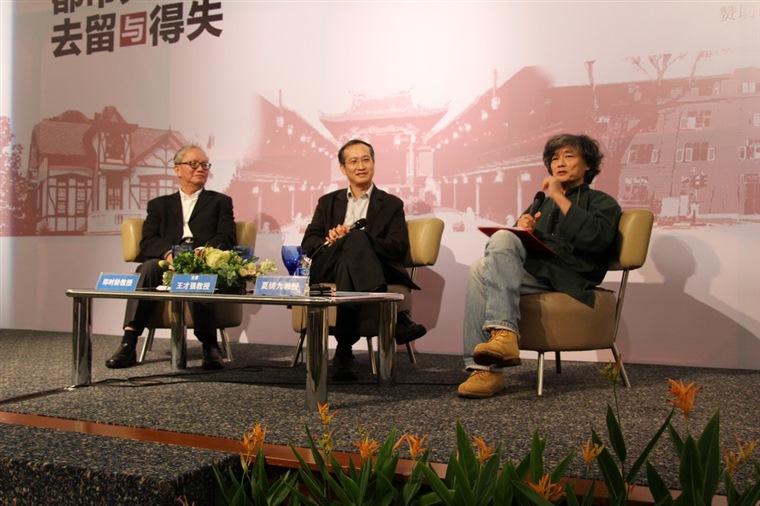2013 UniSIM Contemporary China Public Lecture – Modern City & Cultural Heritage: Conservation and Controversy
On 26 October 2013, Business China collaborated with Lianhe Zaobao and UniSIM Centre for Chinese Studies to once again present the annual UniSIM Contemporary China Public Lecture Series. The topic this year was “Modern City & Cultural Heritage: Conservation and Controversy”. Guest speakers included Professor Emeritus Hsia Chu Joe from Graduate Institute of Building and Planning, National Taiwan University, and Professor Zheng Shiling from Tongji University, Shanghai. Professor Heng Chye Kiang, Dean of School of Design and Environment, National University of Singapore, was the moderator for the panel discussion.
Held at the Singapore Press Holdings Auditorium, the Forum drew a 300-strong audience of Business China members, Zaobao readers, urban planning students and members of the public who were concerned with the impact of urban development on heritage conservation. During the 4-hour Forum, they journeyed with the speakers through Taiwan’s controversial conservation of colonial modernity to Shanghai’s conservation of The Bund and several other foreign concession districts. The session rounded off back on home base with a short sharing of Singapore’s experience in heritage protection and urban development.
Prof Hsia kicked off the Forum by a candid presentation on the challenges of conserving the Taipei Prison. Through this case study, he explored the notion of colonial modernity in Taiwan. He iterated that heritage conservations should not be done merely for the sake of protecting the buildings. He believed that it is more important to know the historical narrative behind each physical structure, to understand what they symbolise and the reason behind their conservation.
Prof Zheng next spoke about the context of architectural and urban districts conservation in Shanghai. In his hour long presentation, Prof Zheng showcased the metropolitan nature of the Shanghai architectural landscape – evident of international influences stemming from the various foreign concession districts during pre-war Shanghai. Despite many buildings being destroyed during the Cultural Revolution period, Prof Zheng remarked that in recent years, the Chinese government is increasingly paying attention to the protection of old buildings. Sharing Prof Hsia’s sentiments, Prof Zheng emphasised cultural heritage conservation as being an integral part of modern city development.
During the dialogue session, the floor was abuzzed with concerns, questions and queries about the speed and state of urban development in Taipei, Shanghai and Singapore. The level of participation had been most encouraging. In addition, the audience was treated to a surprise when Prof Heng introduced Prof Ho Puay-peng, Director of the School of Architecture from The Chinese University of Hong Kong (CUHK), who was seated amongst the audience. Prof Ho is also directing the Centre for Architectural Heritage Research (CAHR) at CUHK. He shared briefly Hong Kong’s conservation experiences and remarked that after the watershed Queen’s Pier incident, the administration had began to pay more attention to the public’s sentiments towards heritage preservation in Hong Kong.
Rounding off the lecture series was Prof Heng who spoke from Singapore’s perspective. Using the drawer as an analogy, Prof Heng equated the limited land space in Singapore to the space within a drawer. With that, he illustrated the phenomenal challenge of catering to the myriad of needs and making tough choices during the process of development. He pointed out that in spite of the space constraint, Singapore has done relatively well in this respect. Some 7100 historical buildings are currently gazette for protection by the Urban Redevelopment Authority in Singapore. Nonetheless, he also encouraged the local community to be more involved in the conservation of cultural heritage in Singapore.
The Forum was indeed an enriching experience as it presented an interesting cross-section of China’s society and completed the complex picture of China with an additional piece of important information about the delicate relationship between people and the build-up environment.

